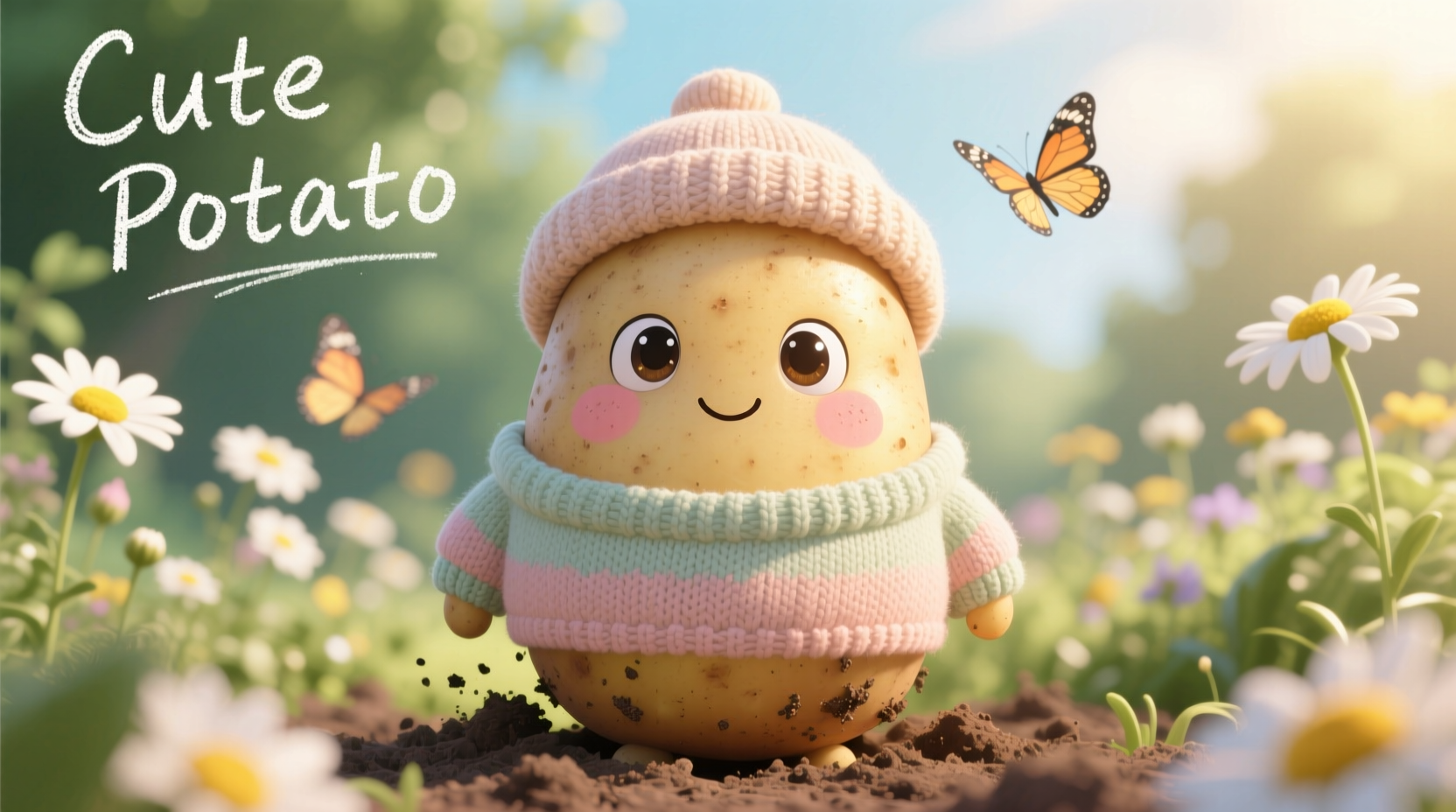What Makes a Potato Cute? Beyond Just Size
When we talk about cute potatoes, we're referring to specific characteristics that make certain varieties visually appealing and charming. The cuteness factor comes from a combination of factors:
- Size: Typically 1-3 inches in length, small enough to fit comfortably in the palm of your hand
- Shape: Unusual, non-uniform shapes like finger-like extensions or oval forms
- Color: Vibrant skin and flesh colors including deep purples, bright yellows, and red hues
- Texture: Smooth skin with minimal eyes or blemishes
- Personality: Some varieties develop "faces" naturally from their eye patterns
According to the USDA Agricultural Research Service, these distinctive characteristics aren't just for show—they often indicate higher concentrations of beneficial phytonutrients. Purple and red varieties, for example, contain anthocyanins that provide both color and antioxidant properties.
Most Popular Cute Potato Varieties
Not all small potatoes qualify as "cute." The following varieties have gained popularity specifically for their visual appeal and charming characteristics:
| Variety | Size & Shape | Color | Best Uses | Growing Season |
|---|---|---|---|---|
| Russian Banana | 2-3" fingerling shape | Yellow skin, golden flesh | Roasting, salads | 80-90 days |
| Purple Peruvian | 1-2" oval to round | Purple skin, deep violet flesh | Salads, mashed, visual dishes | 90-100 days |
| French Fingerling | 3-4" slender finger shape | Rose skin, white flesh | Roasting, grilling | 90 days |
| Laura | 1.5-2" oval | Rose-red skin, white flesh | Boiling, salads | 70-80 days |
| Anniversary | 1" round mini potatoes | Yellow skin, yellow flesh | All-purpose | 60-70 days |
This comparison of adorable potato varieties shows how each brings unique visual characteristics to your garden and plate. The Royal Horticultural Society notes that fingerling varieties like Russian Banana have gained 40% in popularity among home gardeners specifically for their "personable" appearance.

Growing Your Own Cute Potatoes: A Practical Guide
One of the most rewarding aspects of cute potatoes is how accessible they are to grow, even in limited spaces. Here's how to successfully cultivate these charming spuds:
Starting Your Cute Potato Garden
Unlike traditional potatoes that require extensive garden space, cute potato varieties thrive in containers as small as 5 gallons. The University of Minnesota Extension recommends starting with certified seed potatoes (never grocery store potatoes) to avoid disease transmission. Plant them in late spring after the last frost when soil temperatures reach at least 50°F (10°C).
Container Growing Tips for Small Spaces
- Use a mix of 60% potting soil and 40% compost for optimal drainage
- Plant 2-3 seed potatoes per 5-gallon container
- "Hill" the plants by adding soil as they grow to encourage more tuber formation
- Water consistently—cute potatoes need 1-2 inches of water weekly
Container gardening has made cute potatoes accessible to urban growers, with 68% of first-time potato gardeners choosing fingerling varieties according to a 2024 National Association of Farmers and Smallholders Development survey.
Culinary Applications: Cooking with Cute Potatoes
The visual appeal of cute potatoes translates beautifully to the kitchen. Their small size and vibrant colors make them ideal for:
Best Cooking Methods for Maximum Visual Impact
- Rosette cutting: Slice thin rounds and fan out for elegant presentations
- Whole roasting: Toss with herbs and roast whole to preserve shape
- Color contrast: Combine purple, yellow, and red varieties in salads
- Mini potato faces: Use small vegetables to create edible faces on larger potatoes
Professional chefs note that cute potatoes maintain their shape better than standard varieties when cooked, making them ideal for dishes where presentation matters. The American Potato Board reports that restaurants using colorful potato varieties see a 22% increase in positive customer comments about visual presentation.
When Cute Potatoes Aren't the Best Choice
While adorable, cute potatoes have specific limitations to consider:
- Not ideal for traditional mashed potatoes (higher wax content)
- More labor-intensive to peel if recipes require it
- Generally more expensive than standard varieties
- Limited availability in standard grocery stores (best found at farmers markets)
Where to Find Cute Potato Varieties
Locating these charming spuds requires knowing where to look:
Gardening Sources
- Seed catalogs specializing in heirloom varieties (Seed Savers Exchange, Baker Creek)
- Local farmers markets (especially in late summer through fall)
- Specialty gardening stores with organic seed potato sections
Grocery Options
While not always labeled as "cute," look for these terms in stores:
- "Fingerling potatoes"
- "Baby potatoes"
- "Mini potatoes"
- "Petite potatoes"
Whole Foods Market and Trader Joe's often carry colorful potato varieties year-round, with seasonal availability peaking from August through November when new harvests arrive.
Preserving the Charm: Storing Your Cute Potatoes
Proper storage maintains both the visual appeal and quality of your cute potatoes:
- Store in a cool, dark place (45-50°F / 7-10°C is ideal)
- Keep away from onions which release gases that cause sprouting
- Do not refrigerate (causes sweetening and texture changes)
- Use within 2-3 weeks for best appearance and flavor
Unlike standard potatoes, cute varieties often show quality degradation more visibly, making proper storage essential for maintaining their charming appearance.











 浙公网安备
33010002000092号
浙公网安备
33010002000092号 浙B2-20120091-4
浙B2-20120091-4